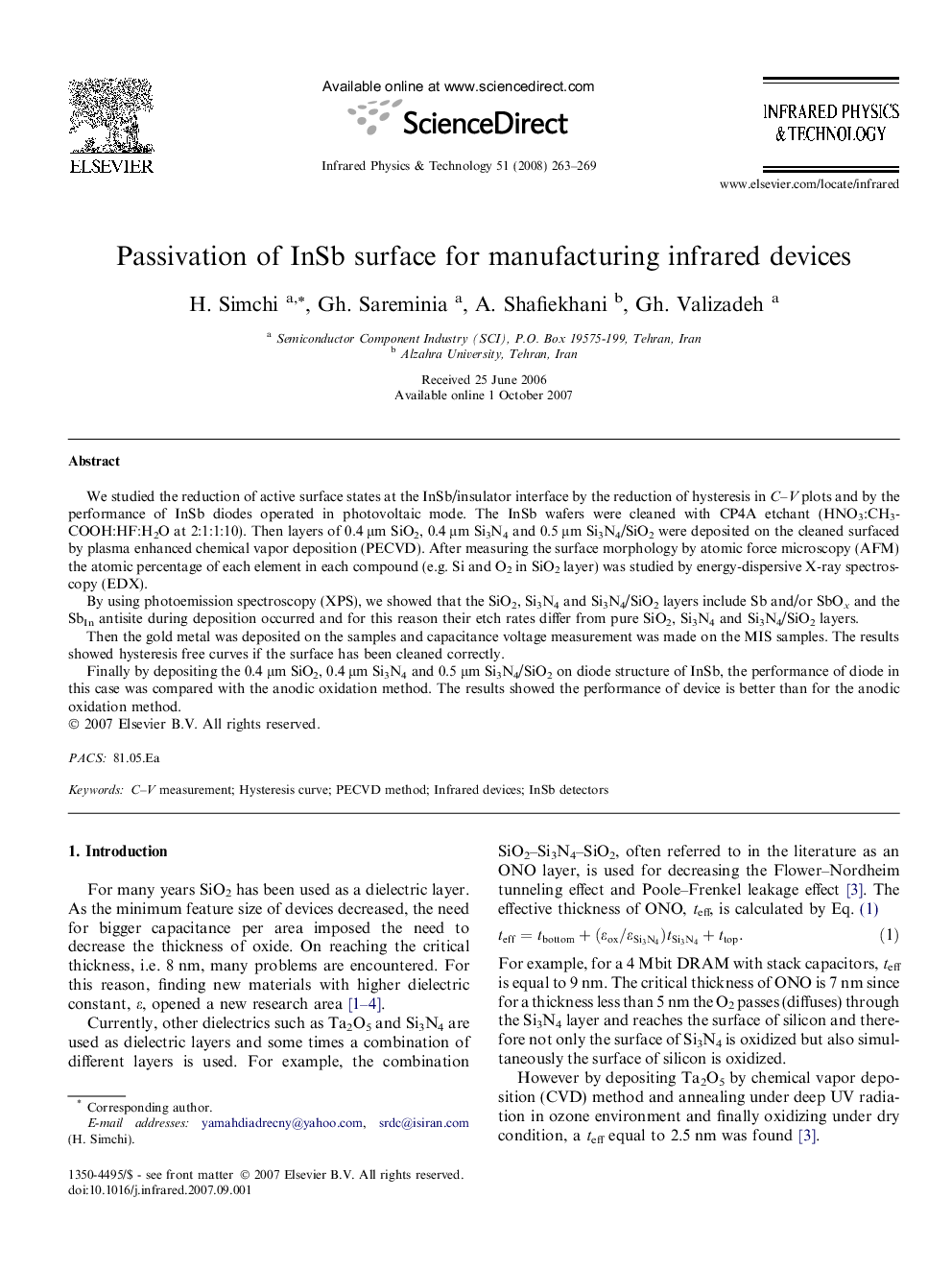| Article ID | Journal | Published Year | Pages | File Type |
|---|---|---|---|---|
| 1785172 | Infrared Physics & Technology | 2008 | 7 Pages |
We studied the reduction of active surface states at the InSb/insulator interface by the reduction of hysteresis in C–V plots and by the performance of InSb diodes operated in photovoltaic mode. The InSb wafers were cleaned with CP4A etchant (HNO3:CH3COOH:HF:H2O at 2:1:1:10). Then layers of 0.4 μm SiO2, 0.4 μm Si3N4 and 0.5 μm Si3N4/SiO2 were deposited on the cleaned surfaced by plasma enhanced chemical vapor deposition (PECVD). After measuring the surface morphology by atomic force microscopy (AFM) the atomic percentage of each element in each compound (e.g. Si and O2 in SiO2 layer) was studied by energy-dispersive X-ray spectroscopy (EDX).By using photoemission spectroscopy (XPS), we showed that the SiO2, Si3N4 and Si3N4/SiO2 layers include Sb and/or SbOx and the SbIn antisite during deposition occurred and for this reason their etch rates differ from pure SiO2, Si3N4 and Si3N4/SiO2 layers.Then the gold metal was deposited on the samples and capacitance voltage measurement was made on the MIS samples. The results showed hysteresis free curves if the surface has been cleaned correctly.Finally by depositing the 0.4 μm SiO2, 0.4 μm Si3N4 and 0.5 μm Si3N4/SiO2 on diode structure of InSb, the performance of diode in this case was compared with the anodic oxidation method. The results showed the performance of device is better than for the anodic oxidation method.
